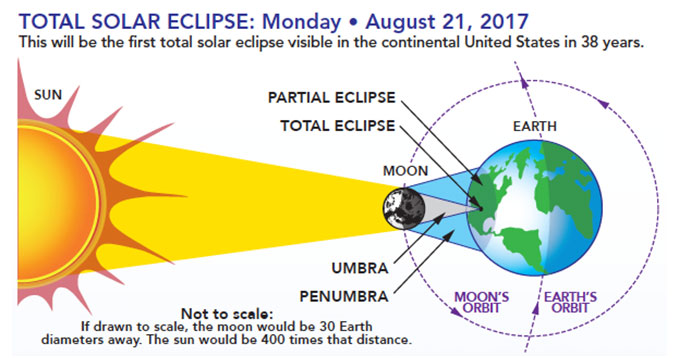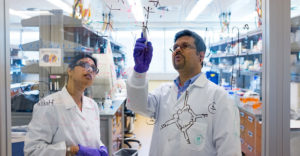
You may have heard, but there’s a total solar eclipse coming to the United States in a few days. It’s sort of a big deal, as total solar eclipses only happen once every three or four decades. On Monday, North America will be treated to a total eclipse of the sun. The moon will completely cover the sun allowing us to view the sun’s corona, or atmosphere, here from earth.
So we know this is coming, but what about the details? To learn a bit more about this event, we reached out to one of SUNY’s own experts in astronomy to get the details.

Name: Raj Pandya
Capacity: Director – John R. Kirk Planetarium; Lecturer – Department of Physics and Astronomy
Campus: SUNY New Paltz
Question: What is a solar eclipse and why is it special?
Answer: Professor Pandya says
A solar eclipse is when the Moon blocks light from the Sun, creating a small shadow on Earth. Observers in the shadow will see either all (total) or some (partial) part of the Sun covered up by the Moon. It is special because it is so rare, on average occurring only once every few decades for a given location. As a matter of fact, this one happening on Monday is the first we’ve seen in the United States in almost 40 years. The diagram below shows us the path of the eclipse as it happens.

How do I view an eclipse safely?
You need to use special solar filters on telescopes to view it safely, or solar viewing glasses. Make sure the solar viewing glasses are certified ISO 12312-2 before viewing as the filters cut out almost all of the light from the Sun so it does not damage your eyes. Do NOT look at the Sun without the correct filters as that will be damaging to your eyes.
While we won’t see the total eclipse at New Paltz, or New York, we will still be able to see it partially, with the Moon blocking about 75% of the Sun’s disk shortly after 2:00pm. Totality will be visible on a curved line stretching from Oregon to South Carolina. The entire event will stretch through much of the day throughout the United States.
Along with members of the Mid-Hudson Astronomical Association, the Physics and Astronomy Department at New Paltz will set up telescopes with solar filters and solar glasses so students can safely view the eclipse. Additionally, faculty will be on hand to show how to make a pin-hole camera out of a shoe box to project the image of the eclipse.
Other SUNY campuses are also taking part in eclipse viewing events.
- In western New York, SUNY Geneseo will have three telescopes outside near the Integrated Science Center on campus. The public is also welcome to view the eclipse through these telescopes, which have protective filters.
- At the University at Albany, 500 staff and students will gather outside for a viewing party.
- SUNY Oneonta is pairing ice cream with a viewing party on campus.
- Many other campuses are organizing viewing parties for their communities as well.
With all this information, we can enjoy this milestone moment in a safe and scientific manner.




A friend of mine and I were at both Saros 130 (Curacao, Feb., 1998) and the recent Saros 145 (Idaho, Aug., 2017). This past Monday afternoon, sitting around the campsite, we debated why time spans varied between contacts. We understand (I think) the variations in time of 2nd to 3rd contact but not the other time spans. With the moon being closer for Saros 130 (based on length of totality), I assumed the time between 1st and 2nd contact would be quicker as well. However, that was not the case.
Saros 130 magnitude for our location was 1.042 and 1.028 for this past eclipse in Idaho.
What affects the time variations between the individual contacts? The moon’s speed in relation to its point in its orbit around the Earth?
Sam Winters
North Carolina